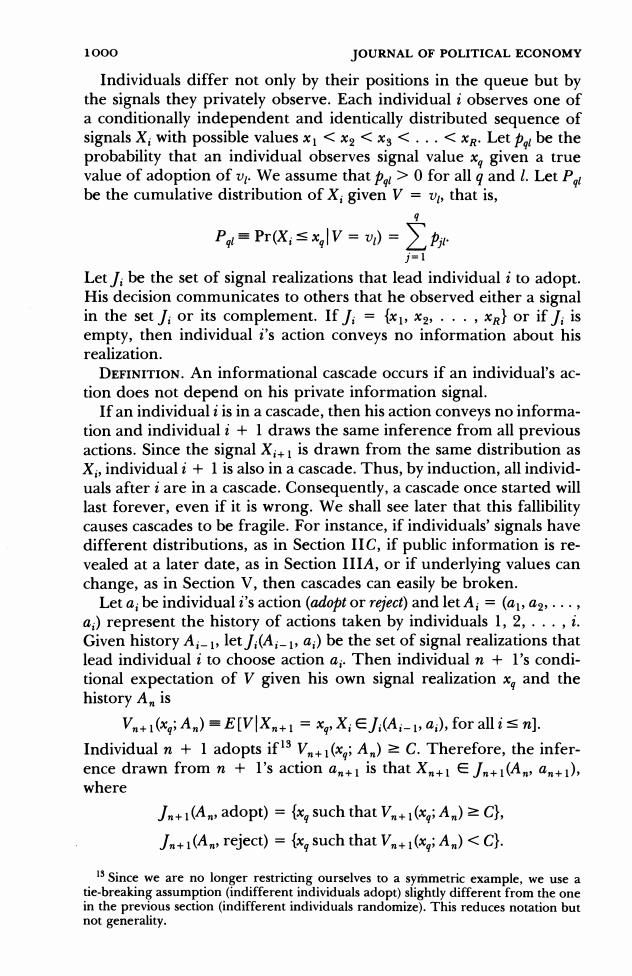正在加载图片...

1000 JOURNAL OF POLITICAL ECONOMY Individuals differ not only by their positions in the queue but by the signals they privately observe.Each individual i observes one of a conditionally independent and identically distributed sequence of signals X;with possible values x<x2<x3<...<xg.Let pat be the probability that an individual observes signal value x given a true value of adoption of v.We assume thata>0 for all g and l.Let P be the cumulative distribution of X;given V=v,that is, P=Pr(,=xlV=-之r Let J;be the set of signal realizations that lead individual i to adopt. His decision communicates to others that he observed either a signal in the set J;or its complement.IfJi=x1,x2,...,xg}or if Ji is empty,then individual i's action conveys no information about his realization. DEFINITION.An informational cascade occurs if an individual's ac- tion does not depend on his private information signal. If an individual i is in a cascade,then his action conveys no informa- tion and individual i+1 draws the same inference from all previous actions.Since the signal Xi+is drawn from the same distribution as Xi,individual i+1 is also in a cascade.Thus,by induction,all individ- uals after i are in a cascade.Consequently,a cascade once started will last forever,even if it is wrong.We shall see later that this fallibility causes cascades to be fragile.For instance,if individuals'signals have different distributions,as in Section IIC,if public information is re- vealed at a later date,as in Section IIIA,or if underlying values can change,as in Section V,then cascades can easily be broken. Let a;be individual i's action (adopt or reject)and let A;=(a1,a2,..., a,)represent the history of actions taken by individuals 1,2,...,i. Given history A:-1,leti(A:-1,a)be the set of signal realizations that lead individual i to choose action a;.Then individual n l's condi- tional expectation of V given his own signal realization x and the history An is Vn+1(cgAn)=E[VlXn+1=xg,X,∈J(A:-,a),for alli≤l. Individual n 1 adopts if1s V+1(A)C.Therefore,the infer- ence drawn from n I's action a+1 is that X+1En+(An,an+), where n+1(An,adopt)=[x such that V+1(A)=Ch, n+1(An,reject)={x such that V+1(xA)<C). is Since we are no longer restricting ourselves to a symmetric example,we use a tie-breaking assumption (indifferent individuals adopt)slightly different from the one in the previous section (indifferent individuals randomize).This reduces notation but not generality